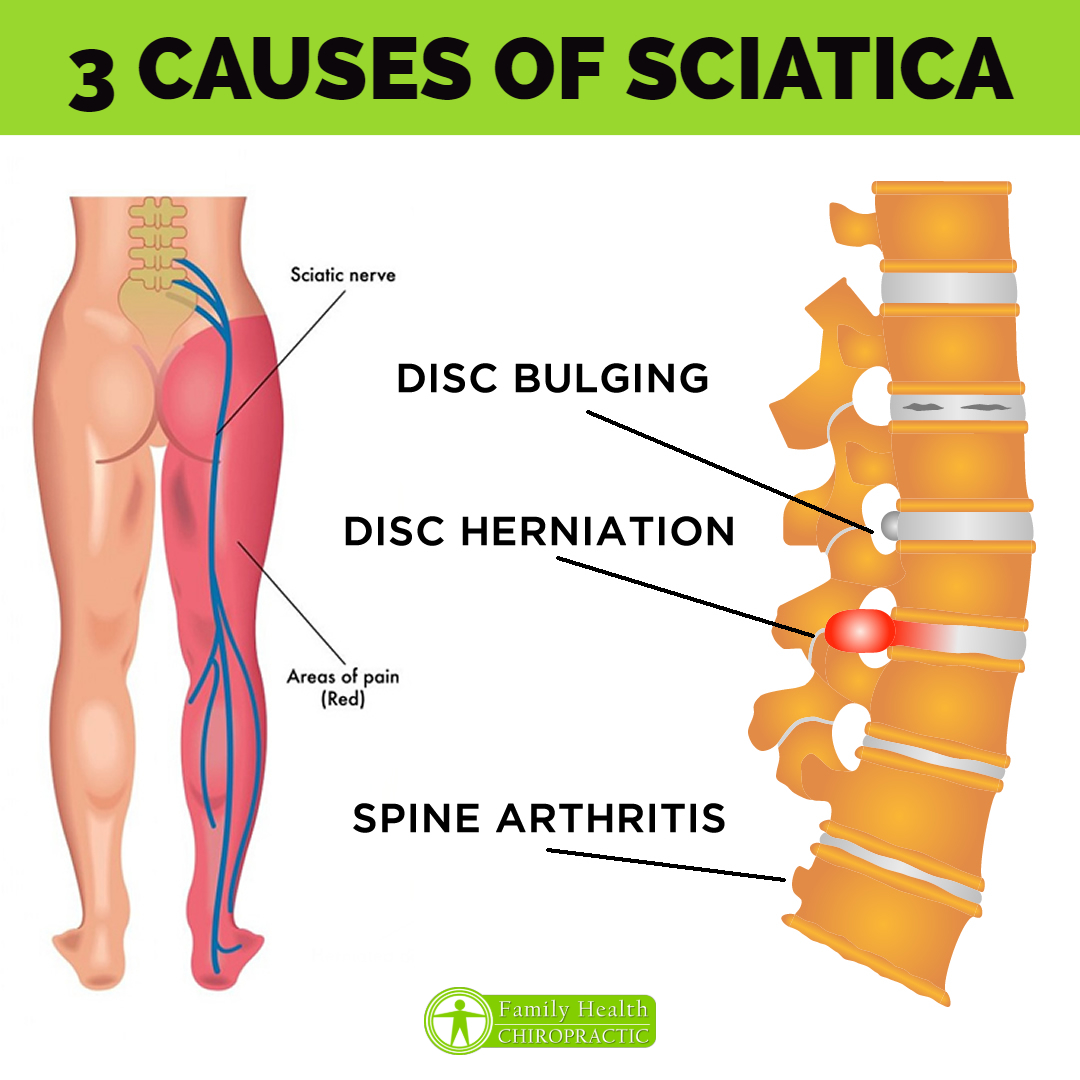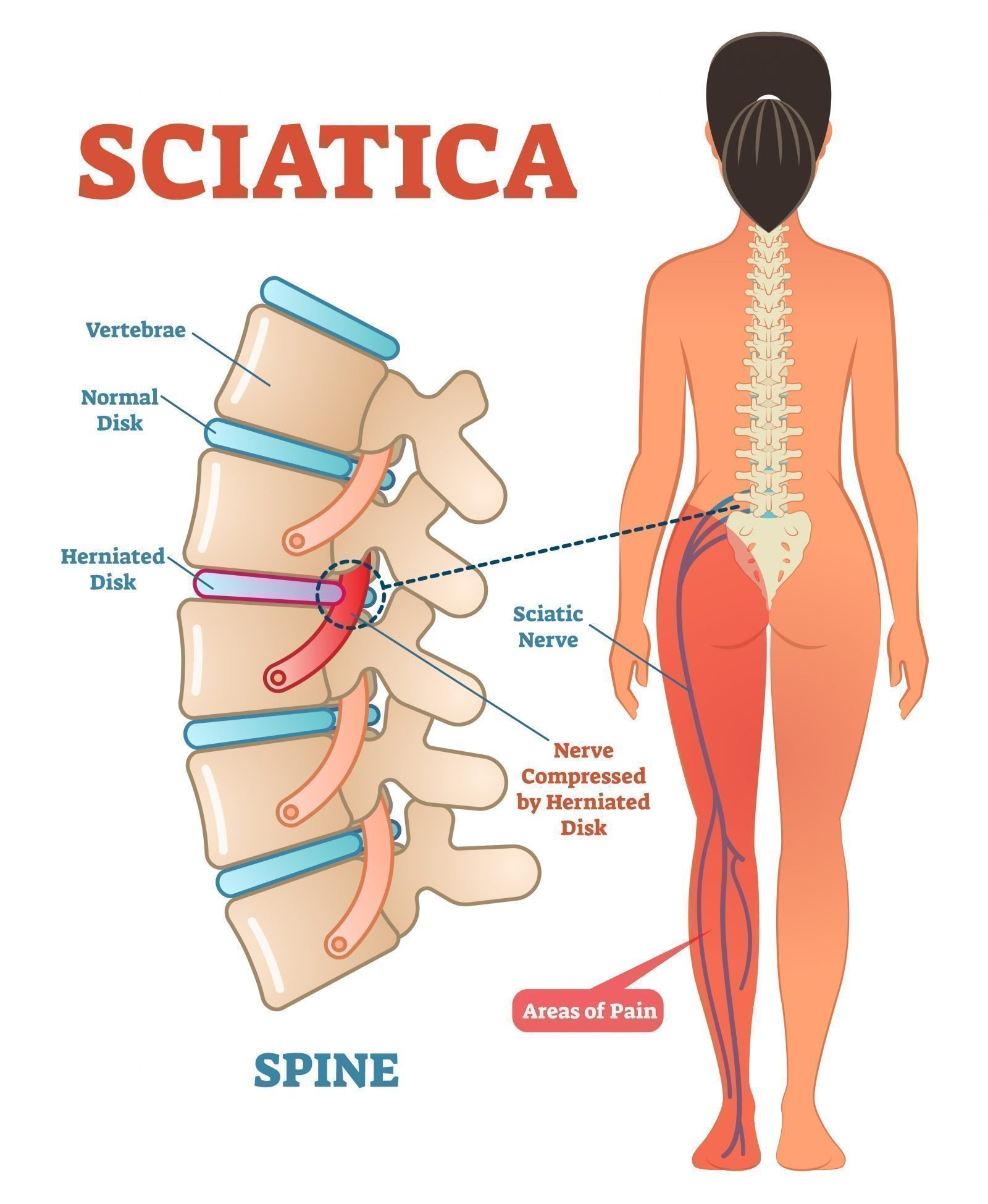

The pain can be felt in various places, such as thigh, buttocks, lower back, lower legs, and continues along the femoral nerve all the way to the feet and toes.

Some people also feel shivering, tingling in the legs, pain in the hip and legs, or muscle weakness in the affected leg or foot. Usually, only one side of the body is affected. The pain may intensify if the person coughs or sneezes, and prolonged sitting may worsen the symptoms. Sometimes it can feel like an electric shock. The pain can vary greatly, from mild to severe.

What causes sciatica and how long does sciatica last? Learn all about the sciatica symptoms and how to treat sciatica in this text. Sciatica – inflammation of the femoral nerve is still known in terminology as sciatic neuralgia or lumbar radiculopathy. Pressure on the sciatic nerve causes a recognizable, sharp pain called sciatica, and it makes it even hard to stand or sit. It extends from the root of the spinal cord, across the pelvis, along the back of the leg, and ends at the foot. The sciatic nerve is one of the longest and largest nerve in the human body.

Sciatica is not a disease but refers to a group of symptoms that include lower back pain (lumbago), hip pain, leg pain, numbness, and poor mobility. Sciatica manifests as pain in the lower back, spreading over the buttocks to the leg and foot. Sciatica is a painful condition caused by pressure on the root of a large nerve coming out of the spinal cord – nervus ischiadicus.


 0 kommentar(er)
0 kommentar(er)
